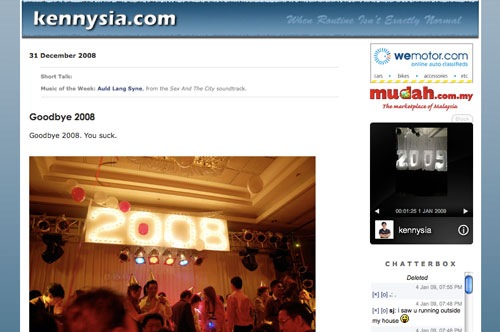In the States...

Figure 1: Example of Obama's Campaign extending to the iPhone
Image Source: http://zedomax.com/
One of the most powerful things Obama did was to create a section on his website MyBarackObama.com that enabled Americans to voice out their opinions on critical issues. This opened a door of communication between the White House and the people which created room for greater freedom of speech and democracy.
The success of Obama's use of new media can be seen through the five million supporters garnered in third party social networks (MacManus 2009). 3.2 million people signed up as his supporters on Facebook during election period, and a group called Students for Barack Obama was created in July 2007.
In Malaysia...
Closer to home, the benefits of new media can also be felt as alternative media such as MalaysiaKini and other political blogs gain prominence. Readers are gradually turning to these sites for credible news because of government censorship in the mainstream media. However, bloggers should be aware of their social responsibility as malicious content such as rumours, defamation and slander can be easily spread through uncensored media.
For example, the Singaporean student Wee Shu Min had to take down her blog in 2006 because of elitist remarks that were deemed offensive towards the Singaporean heartlanders. Her father, Singaporean Member of Parliament Wee Siew Kim, apologized and commented that her comments should have been "tempered with sensitivity".
Some have proposed greater regulation of the blogosphere such as the registration of bloggers (The Malaysian Insider 2009) to prevent inciting anger among different racial groups, yet others think it is a futile exercise which is against the principles of democracy and free speech. I believe ethical publishing in new media is an issue that should continue to be debated so that a balance between protecting freedom of speech and social stability can be achieved.
References:
1. Kruckeberg, D, Turk, JV & Newsom, D 2000, This is PR: The Realities of Public Relations, 7th Edn, Wadsworth, USA.
3. The Malaysian Insider 2009, 'Proposal to Register Bloggers Needs Careful Study--Rais', viewed 3 June 2009, <http://www.themalaysianinsider.com/index.php/malaysia/27291-proposal-to-register-bloggers-needs-careful-study-rais>.





